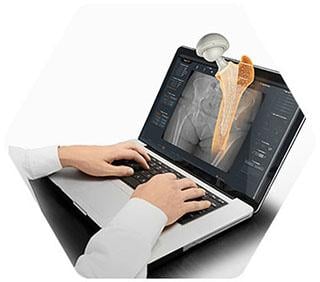
October 24, 2019 — EOS imaging announced the first patient cases performed with its hipEOS 3.0 surgical planning software delivered intraoperatively by Intellijoint HIP, Intellijoint Surgical’s smart navigation system. Intellijoint HIP offers surgeon-controlled surgical guidance for intraoperative positional measurements, to optimize the treatment of total hip arthroplasty (THA) surgical results.
The first cases were performed by Peter K. Sculco, M.D., orthopedic surgeon at Hospital for Special Surgery (HSS) in New York City and retained consultant to EOS imaging and Intellijoint Surgical.
hipEOS 3.0, a 3-D surgical planning solution using weight-bearing standing and sitting EOS images and 2-D/3-D patient-specific models and datasets, helps to select and position implants for the best anatomical fit and optimizes range of motion based on each patient’s 3-D anatomy. This delivers an optimal surgical strategy while taking into consideration patient-specific factors that are key criteria for successful THA, including hip-spine relationship, leg length discrepancy, femoral offset and femoral torsion.
Delivery of the hipEOS 3.0 plan intraoperatively by Intellijoint HIP enables surgeons to select the best implant type and size, its ideal position and orientation as well as make real-time intraoperative measurements that deliver an accurately executed plan in the operating room. This is facilitated through EOS imaging’s newest solution, EOSlink, for seamless integration of its EOSapps, and provides increased confidence prior to and within the operating room. Together, these offerings ensure the optimized clinical results, while reducing leg length discrepancies and risk of dislocation or impingement.
Sculco commented, “The combination of hipEOS with the Intellijoint HIP system instills a great deal of confidence that I have an accurate preoperative surgical plan that includes patient-specific modifications based on dynamic pelvic motion and femoral version, and can then execute that plan with a high level of fidelity. I believe this represents a valuable combination of technologies that are relatively low cost, easy to use, improve operative efficiencies, and ultimately lead to improved patient outcomes.”
For more information: www.eos-imaging.com


 March 19, 2025
March 19, 2025 








